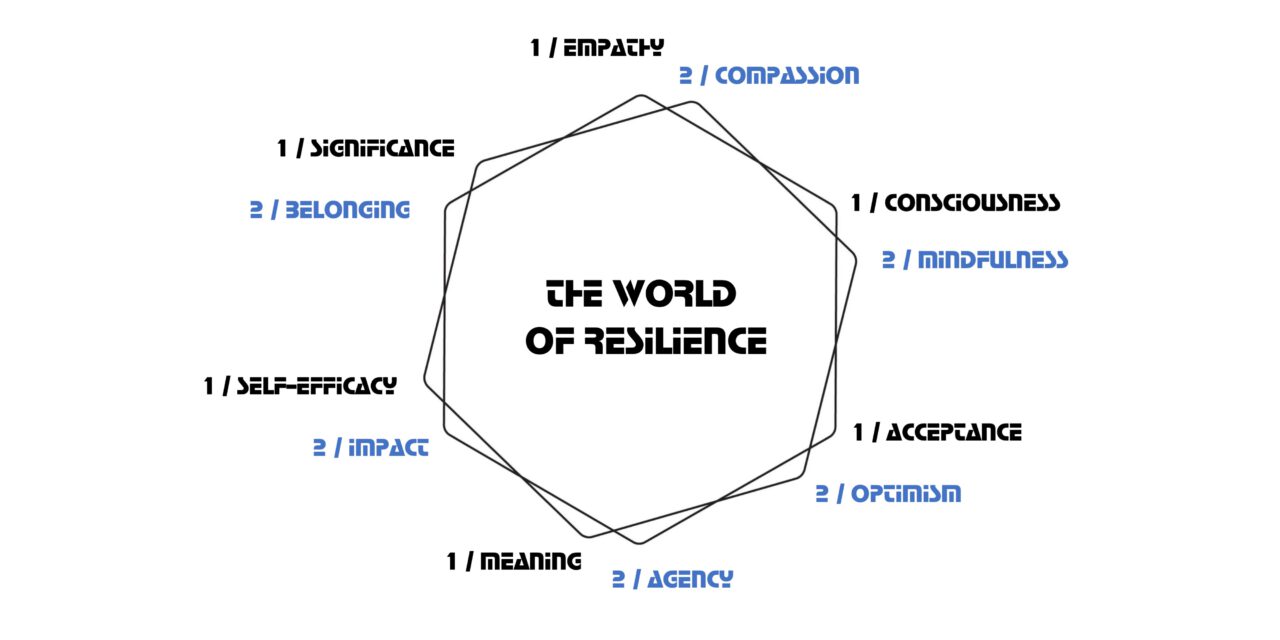Resilience does not just happen, but is made up of many different facets and skills that are often very closely related and influence each other (positively).
To describe these and look at them in more detail – and thus deconstruct resilience for a better understanding – we have developed the resilience hexagon, which is actually not a hexagon but a dodecagon.
In this structural model, there are six complementary pairs that describe individual facets and skills that are important for building resilience:
- Empathy & Compassion
- Consciousness & Mindfulness
- Acceptance & Optimism
- Meaning & Agency
- Self-efficacy & Impact
- Significance & Belonging
Each one is important for the development of resilience, but only in combination do they enable us to grow with and through our challenges.
That is why there are more and more experts who want to replace the term resilience – which originally meant returning to an initial state – with the term prosilience. The idea behind this idea is that we do not simply return to our initial state, but that we always learn something from challenges and crises, and thus constantly develop and grow beyond ourselves. And I wholeheartedly endorse this perspective and attitude!





